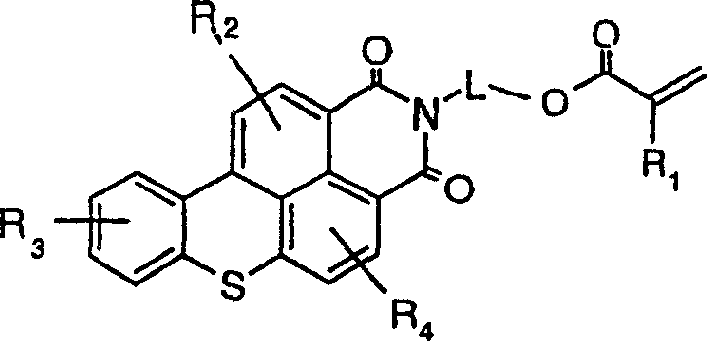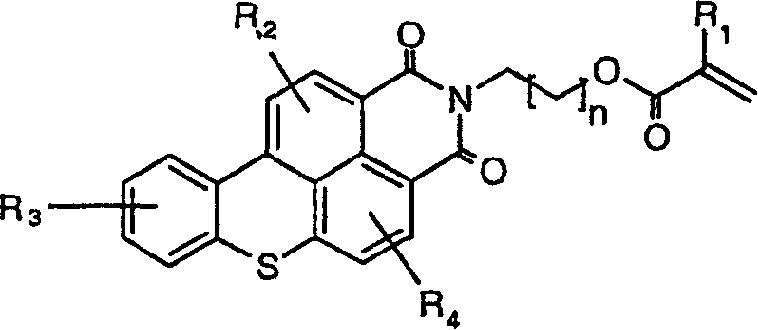Functional fluorescent dyes
A compound, methyl technology, applied in the field of fluorescent dyes, can solve the problems of no compatibility, poor solubility, limited, etc., and achieve the effect of improving solubility
- Summary
- Abstract
- Description
- Claims
- Application Information
AI Technical Summary
Problems solved by technology
Method used
Image
Examples
Embodiment 1
[0188] A 600 mL Parr reactor (obtained from Parr Instrument Co., Moline, IL) was charged with MeFBSEA (146.30 g; 0.36 mol), MeFBSEMA (10.03 g; 0.023 mol), BMA (3.34 g; 0.023 mol), LMA ( 5.85 g; 0.023 mol), MAA (1.67 g; 0.020 mol) and AD-1 (0.011 g). After the material had dissolved, LUPEROX (9.24 grams) and HFE-7100 (440.80 grams) were added. The reactor was then sealed, vacuumed to 5-10 psig (34-68 kPa), degassed four times, and then purged with nitrogen. The reactor temperature was raised and maintained at 80°C for approximately 24 hours. The solution obtained by filtration is used to coat the substrate to be tested.
Embodiment 2
[0190] Example 2 was prepared as described in Example 1, except that AD-2 was used instead of AD-1, and the AD-2 / polymer mass was gently heated to 80°C in an oven.
Embodiment 3
[0192] Example 3 was prepared as described in Example 1, except that AD-3 was used instead of AD-1.
PUM
| Property | Measurement | Unit |
|---|---|---|
| melting point | aaaaa | aaaaa |
| melting point | aaaaa | aaaaa |
Abstract
Description
Claims
Application Information
 Login to View More
Login to View More - R&D
- Intellectual Property
- Life Sciences
- Materials
- Tech Scout
- Unparalleled Data Quality
- Higher Quality Content
- 60% Fewer Hallucinations
Browse by: Latest US Patents, China's latest patents, Technical Efficacy Thesaurus, Application Domain, Technology Topic, Popular Technical Reports.
© 2025 PatSnap. All rights reserved.Legal|Privacy policy|Modern Slavery Act Transparency Statement|Sitemap|About US| Contact US: help@patsnap.com



